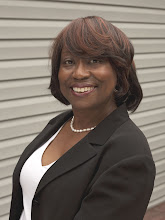WASHINGTON – Today U.S. Senate Special Committee on Aging Chairman Herb Kohl (D-WI) held a hearing on the federal government’s efforts to hire and retain older workers and what policy changes would help them do it better. Over the next five years, more than half a million permanent full-time federal employees—or about one-third of the full-time federal workforce—will be eligible to retire. In ten years, more than 60 percent of the federal workforce will be retirement-eligible. Panelists at today’s hearing recommended removing obstacles to working past retirement age and providing incentives, such as flexible working options, to enable the federal government to maintain the valuable skills and experience of older workers. Improving the federal government’s hiring and retention of older workers will also make it a model the private sector could follow, a concept that was highlighted in the Interagency Taskforce on the Aging Workforce’s recent report.
“With the retirement wave upon us, we must encourage employers to adopt policies now to attract and retain older workers. Nowhere is the foreseen labor shortage more pronounced than within the workforce of the nation’s largest employer: the federal government,” said Chairman Kohl. “Our commonsense policy would create a win-win situation for both older workers and the companies that employ them.”
Yesterday, Chairman Kohl, Ranking Member Gordon H. Smith (R-OR), and Senator Kent Conrad (D-ND) introduced S. 2933, the Incentives for Older Workers Act, comprised of a number of provisions to increase the participation of older workers in the workforce. One provision would remove the penalty under the Civil Service Retirement System (CSRS) for part-time services, correcting a disincentive for employees nearing the end of their careers who would like to phase into retirement by working part-time. Kohl and Smith are also expected to introduce a second piece of legislation to promote the retention and hiring of older workers specific to the federal government later this spring.
Barbara Bovbjerg and Robert Goldenkoff, Directors from the U.S. Government Accountability Office (GAO), discussed the initial findings of a report Chairman Kohl requested on older workers and the federal government, to be released later this year. They offered an overview of the looming wave of retirement-eligible workers, and discussed some government-wide obstacles and incentives to hiring and retaining older workers. Finally, they highlighted a few select agency practices. Nancy Kichak, Associate Director of Strategic Human Resources Policy for the U.S. Office of Personnel Management (OPM), shed some light on their hiring and retention policies, including the flexible workforce options currently available to agencies. Thomas M. Dowd, Administrator for the Office of Policy and Development and Research within the Employment and Training Administration of the U.S. Department of Labor (DOL), testified about the DOL’s role as the lead agency for the Taskforce on the Aging of the American Workforce, created at the request of Kohl and Smith in 2005.
On the second panel, Max Stier, President and CEO of the Partnership for Public Service, talked about their FedExperience initiative, as well as their innovative partnership with IBM to place the company’s retirees into positions within the federal government. Lastly, Chai Feldblum, Co-Director of Workplace Flexibility 2010 at Georgetown University, offered testimony on the history of flexible work options in the federal government and how they can be better utilized to maintain a skilled and experienced federal workforce.
Wednesday, April 30, 2008
KOHL HEARING, LEGISLATION TO IMPROVE FEDERAL GOVERNMENT’S HIRING, RETENTION OF OLDER WORKERS
Subscribe to:
Post Comments (Atom)








No comments:
Post a Comment